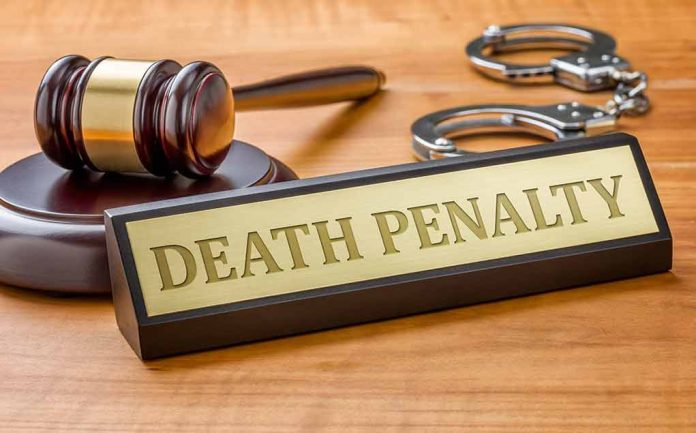
Alabama has executed Alan Eugene Miller using nitrogen gas, marking the second time this execution method has been employed in the United States.
At a Glance
- Alan Eugene Miller, 59, was executed in Alabama for the 1999 murders of three men.
- This marks the second use of nitrogen gas for execution in the U.S.
- Miller’s execution is part of a recent increase in capital punishment, with five executions occurring within a week.
- The execution has reignited debate over the humaneness of nitrogen gas as an execution method.
- Alabama is one of only three states that permit execution by nitrogen hypoxia.
Miller’s Crimes and Legal Journey
Alan Eugene Miller, 59, was sentenced to death for the 1999 murders of Lee Holdbrooks, Christopher Scott Yancy, and Terry Lee Jarvis in Pelham, Alabama. The victims were killed at their workplaces in a shocking act of violence that shook the community. Jurors convicted Miller after just 20 minutes of deliberation and recommended the death penalty by a 10-2 vote.
Miller’s legal battles included an initial plea of not guilty by reason of insanity, which he later withdrew. His execution was initially scheduled for 2022 but was halted due to difficulties in administering a lethal injection. This reprieve led to further legal challenges, including claims that Miller had chosen nitrogen hypoxia over lethal injection, a claim the state initially disputed.
The Execution Process
The execution by nitrogen gas involves replacing breathable air with pure nitrogen, causing death by lack of oxygen. Alabama Corrections Commissioner John Q. Hamm stated that the execution went according to plan. However, witnesses reported that Miller exhibited shaking for about two minutes, followed by six minutes of periodic gulping breaths before stopping movement.
In his final moments, Miller’s last words were muffled by the gas mask, but he was reported to have maintained his innocence, stating, “I didn’t do anything to be in here.” He also reportedly asked friends and family who were there to take care of someone, but the details of that exchange are private. Miller’s last 24 hours included visits from family, friends, and attorneys, and he had a final meal of hamburger steak, a baked potato, and French fries.
Controversy Surrounding Nitrogen Gas Executions
The use of nitrogen gas for executions has sparked significant debate. Human rights groups have described the method as inhumane, and there are conflicting reports about the level of suffering experienced by those subjected to it. Media witnesses described Miller as shaking and gasping before his death.
Alabama Corrections Commissioner John Q. Hamm and Attorney General Steve Marshall asserted the execution went just as expected. Of the shaking, Hamm said involuntary movements were anticipated due to oxygen deprivation. Meanwhile, Marshall said the execution method was proven a humane practice in spite of “misinformation campaigns by political activists, out-of-state lawyers, and biased media.”
The state’s Attorney General’s Office also argued in a filing concerning the similar execution of Kenneth Smith earlier this year that nitrogen hypoxia is “perhaps the most humane method of execution ever devised.” It suggested any statement to the contrary was a “false narrative.”
Gov. Ivey stated that justice was served and described Miller’s acts as “pure evil.”
Broader Context of Capital Punishment
Miller’s execution is part of a significant increase in capital punishment in the U.S., with five executions occurring within a week, the highest frequency in over two decades. It also represents the 1,600th execution since the death penalty was reinstated in 1976. This surge in executions has reignited national discussions about the ethics and practicality of capital punishment.
As the debate continues, Alabama remains one of only three states that permit execution by nitrogen hypoxia. The use of this method and the increased frequency of executions are likely to remain contentious issues in the ongoing national conversation about criminal justice and the death penalty.
Sources
- Alabama puts man convicted of killing 3 to death in the country’s second nitrogen gas execution
- Alabama Carries Out Second Execution Using Nitrogen Gas
- Alabama Executes Alan Miller, 1600th Person Executed in Modern Era of the Death Penalty
- Alabama executes inmate with nitrogen gas after past lethal injection attempt failed
- Alabama inmate Alan Miller executed with nitrogen gas Thursday for 1999 shootings














